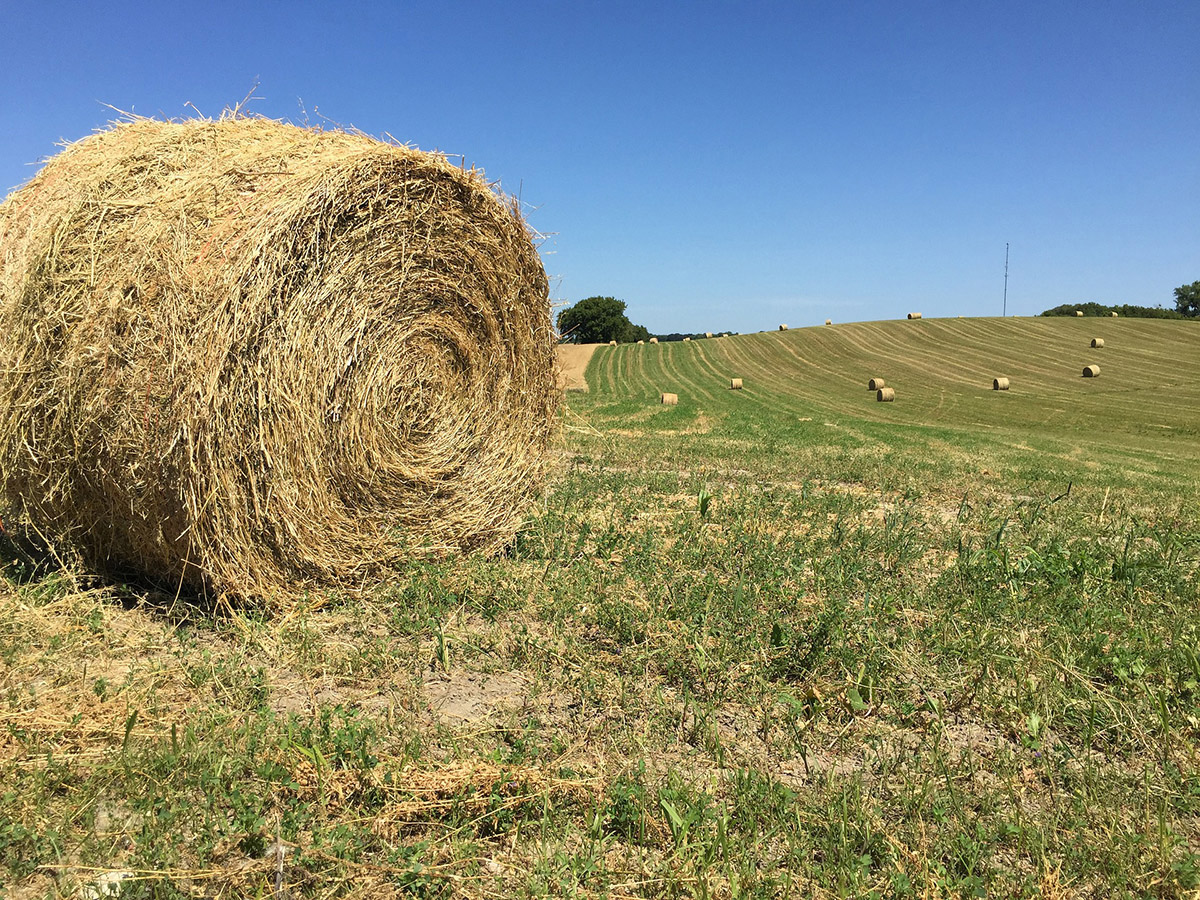
By Tyler Williams, Extension Educator
The hay business is a difficult one, and the weather is often the root of the difficulties. Baling at midnight, lack of yield and delayed harvest are all issues that can be directly caused by weather. It never fails that it does not rain unless you have hay on the ground. So, here are a few common obstacles and helpful tips.
RAIN ON WINDROW
There are many cases when rain or damp conditions persist and the alfalfa windrow remains on the ground for days. This presents potential weed and regrowth issues for the area under the windrow. The weeds may require spraying to maintain quality and protect the alfalfa stand. The plants under the windrow will be delayed, which will cause part of the field to bloom later and may alter the timing of the next harvest. Although it is important to base the timing of the next harvest on the desired goal for your hay, if possible, wait for the delayed regrowth areas to begin to bloom before cutting.
HIGH TEMPERATURES
High temperatures during the summer can cause alfalfa to bloom more rapidly, which may be misleading for the timing of the next harvest. Even though the crop has bloomed and “appears” ready for harvest, the high temperatures actually extend the recovery time from the previous cutting. High temperatures, especially at night, reduce the stored nutrients in the roots, which are required for plant vigor after cutting. This requires extra time between cuttings in order for the plant to build up its “reserves.”
DROUGHT
Dry conditions in non-irrigated fields obviously pose a problem to alfalfa production. In extremely dry conditions, the alfalfa plant will be nearly dormant and will stop growing. It is difficult to know whether to windrow what is available or let it be. As the alfalfa continues to sit there, it will slowly lose feed value and tonnage. Harvesting the hay is an option, if there is enough feed to justify the fuel and labor. Grazing is also another option, but caution should be used for the risk of bloating. Cutting the hay may stimulate the alfalfa to try and regrow, but moisture is ultimately needed for those new shoots to grow.
MOISTURE FOR FIELD OPERATIONS
Alfalfa quality is not only impacted by harvest timing, but it is also affected by curing, raking and baling conditions. Rain can take nutrients away from the plant during the curing process and can also cause mold. Getting hay to dry fast not only helps to avoid the potential for rain damage, but plant cells continue to respire until hay gets to about 50 percent moisture, losing potential weight. To help the dry-down time, spread the recently cut hay in a wide swath and turn the hay to expose moister hay underneath. Hay baled too wet can get moldy, over-heat or catch on fire. On the other extreme, raking or baling hay that is too dry can cause extreme leaf loss, which is the most valuable part of the plant. Rake the hay when it is about 40 percent moisture and bale dry hay when the leaves are re-wet by dew or high humidity.
USE FORECAST TOOLS
Using forecast tools can help plan the cutting, raking and baling operations. Nebraska Extension’s AgriTools mobile app and the National Weather Service (http://www.weather.gov) provide an hourly forecast graph for temperature, precipitation, dew point and humidity. This hourly forecast may help to plan the timing of the field operations in order to successfully yield a higher-quality hay product.
Source: Hay and Forage Minute – Dr. Bruce Anderson, UNL Professor of Agronomy, Extension Forage Specialist.